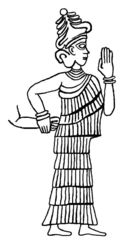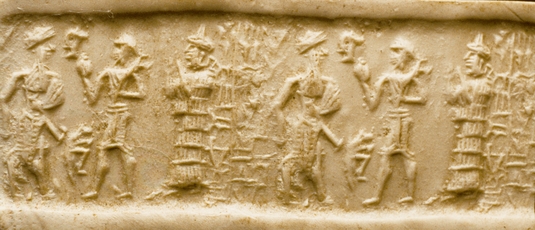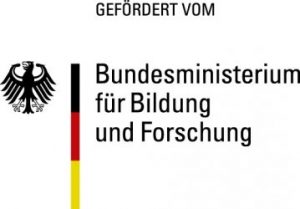DigANES
Concept for Digitizing Ancient Near Eastern Seals and Sealings (DigANES) 
In March 2017, the Institute for Near Eastern Archaeology of the Ludwig-Maximilians-University Munich launched a project to develop a “Concept for the Digitization of Ancient Near Eastern Seals and Sealings (DigANES)”, funded by the German Federal Ministry of Education and Research (BMBF). Headed by Prof. Dr. Adelheid Otto, Dr. Elisa Roßberger and Anna Kurmangaliev M.A. are currently in charge of the project. We are assisted by a dedicated group of students including Antonina Rybalchenko, Wadieh Zerkly, Zena Awad and Svende Bielefeld.
Drawing: Anna Kurmangaliev acc. to Buchanan 1983, 628

Seal Impression from Isin (IB-1378 ©Isin Archiv LMU München).
The widespread use of cylinder and stamp seals in Ancient Near Eastern administrative practice created a huge pool of valuable data for social, cultural, or art-historical research. The ancient record – extending from the Eastern Mediterranean coast to the Iranian plateau, and dating from the late fourth to first millennium BCE – connects images and texts through inscriptions on seals and the impression of sealings on written documents in an exemplary manner.
The goal of DigANES is to create an open-access platform that encourages and facilitates studies of Ancient Near Eastern seals and seal impressions in a contextualized and systematic manner. We want to achieve this by digitizing a comprehensive corpus of visual sources, labeling their individual pictorial elements with a standardized vocabulary, and integrating these augmented visual data into a digitally growing semantic web.
Developing an apt multi-lingual vocabulary to verbally capture pictorial information is one of the key-challenges in this early phase of the project. Such a vocabulary should follow established Digital Humanities procedures, while respecting particularities of Ancient Near Eastern sources.

We will use scans/photographs as well as line-drawings to visualize the record. While the latter remain central for iconographic analysis, high-quality products of digital imaging technologies allow for greater objectivity and cross-checking, but also for capturing material characteristics that elude black-and-white drawings.
This is a large-scale and long-term endeavour that will benefit the study of Ancient Near Eastern cultures by integrating the material, visual, and textual record.
Do you want to know more? Please check our homepage (http://www.diganes.gwi.uni-muenchen.de/ ) and contact us on DigANES@web.de

